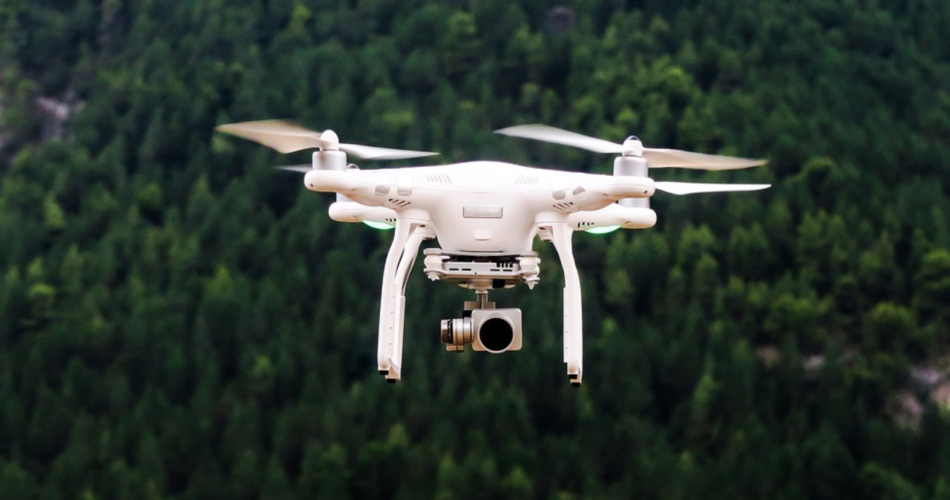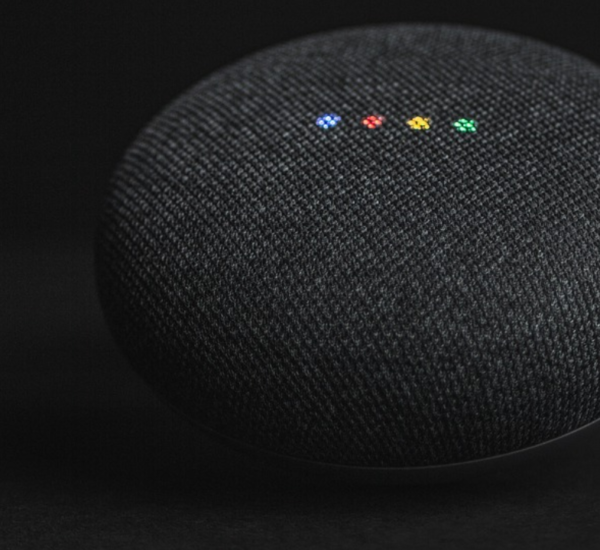Drones are unmanned aircraft. Drones are also referred to UAVs, also known as unmanned aerial vehicles (UAVs) or unmanned aircraft systems. In essence, a drone is a flying machine that is remotely controlled or flies on its own by using flight plans controlled by software within its embedded system which operates in conjunction with onboard sensors and an international position system ( GPS).
UAVs were typically linked to the military. They were initially utilized to practice anti-aircraft targets and intelligence gathering as well as, somewhat controversially, weapon platforms. Drones are currently employed in a variety of civilian tasks, including the following:
- Search and Rescue
- surveillance
- Traffic monitoring
- Weather Monitoring
- firefighting
- for personal use
- Drone-based Photography
- videography
- Agriculture
- Delivery services
Table of Contents
How do drones function?
Drones serve two main capabilities: flight mode as well as navigation.
For drones to fly, they must have a source of power like a battery or fuel. A drone’s frame is usually constructed of a light, composite material that helps to decrease weight and enhance mobility.
Drones are controlled by a controller which allows the pilot to make use of remote controls to fly as well as navigate and take the drone to land. Controllers communicate with drones by radio waves, for example, WiFi..
What are the most popular drone characteristics and drone components?
Drones are made up of a variety of components, such as:
- electronic speed control devices, which are used to control the speed of a motor and its direction;
- flight controller
- GPS module;
- battery;
- antenna;
- receiver;
- cameras;
- sensors, which include ultrasonic sensors as well as collision avoidance sensors
- accelerometer is a device that is used to measure the speed of the vehicle as well as
- altimeter is a device that measures altitude.
Drone features are different according to the application the drone is being used to. Examples of features are:
- different types of cameras that offer high performance, zoom, and the ability to tilt and steady-cam;
- Artificial Intelligence ( AI) that allows drones to follow objects
- AR features that overlay virtual objects onto footage from the camera of the drone
- Format for storage of media;
- the maximum flight duration that determines how long the drone will remain in the air.
- Maximum speeds, including ascent and descent
- hover for accuracy;
- Obstacle sensory range
- Altitude hold helps keep the drone at a set altitude
- Live video feeds live video feed
- Flight logs.
The GPS on a drone relays its exact whereabouts to the control. An altimeter on board can transmit information about altitude. The altimeter can also help keep the drone at a certain altitude when the controller has designated one.
Drones can be outfitted with sensors, such as ultrasonic, laser, or lidar distance sensors as well as a time-of-flight sensor, chemical sensors, and even orientation and stabilization sensors. Visual sensors can provide video and still images. red, green, and blue sensors gather traditional visual blue, green, and red wavelengths. Multispectral sensors can collect both visible and invisible wavelengths like ultraviolet and infrared. Magnetometers, accelerometers, gyroscopes barometers, and GPS are among the most typical drone features.
For instance, thermal sensors allow security and surveillance applications for monitoring livestock and heat signature detection. Hyperspectral sensors can help detect vegetation and minerals. They are perfect for applications in crops’ health as well as water quality and surface composition.
Some drones have sensors that identify obstacles and avoid collisions. The sensors were initially specifically designed to detect objects that were in the direction and behind the drone. A few drones are now equipped with obstacle detection in five different directions: forward, back below, above, and side-to-side.
To land, drones employ visual positioning systems that have upward-facing cameras as well as ultrasonic sensors. The ultrasonic sensors decide how close the drone is to the ground.
What kinds of drones are there?
There are two kinds of drone platforms:
- Rotors, such as single-rotor, and multi-rotors like quadcopters, tricopters, hexacopters, and octocopters.
- fixed-wings, such as hybrid vertical takeoff and land ( VTOL) drones that do not require runways.
Drones that are not military in nature are usually private or hobbyist drones, and commercial airplanes. Personal drones typically have camera-like video capabilities or even still images.
Personal drones
A variety of personal drones are accessible for use by consumers. They’ve become part of the standard Black Friday and Cyber Monday deals that offer HD video as well as still camera capabilities. Most operators are novices seeking to fly drones for fun or to race. They typically weigh around 10 pounds or less and may weigh less than one kilogram.
A few popular personal drones include :
- Autel EVO II offers high-end video.
- DJI The FPV Combo is specifically designed for racing.
- DJI Air 2S is a great device for beginners, featuring an adjustable design and sensors.
- DJI Mavic 3 is a camera drone that is powerful and has Omnidirectional obstacle detection.
- DJI Mini 2, at around 242 grams it’s among the lightest drones.
- Parrot Anafi is compact with advanced stabilization capabilities that ensure it is windproof.
- PowerVision PowerEgg X flies in any weather condition, can land on water, has AI capabilities, and can be converted into a handheld camera.
- Ryze Tello can be rated as a high for novices.
Commercial drones
Insitu is an Insitu subsidiary of the Boeing company, providing the ScanEagle the UAV with a 10 foot wingspan and a weight of 35 pounds. Insitu also makes the Integrator which is an aircraft weighing 80 pounds that has a 16-foot wingspan. Insitu drones are not able to launch from runways. Instead, they utilize VTOL capabilities that are part of the launchers of the company and in their recovery systems. Sensors offered include electro-optic imagers as well as mid-wave-infrared imaging sensors, infrared rangefinders, and lasers.
Insitu Integrator is a UAV that has a Skyhook launcher Insitu Integrator extended range UAV is mounted on the Skyhook launcher.
In the year 2018, Boeing announced it had developed an unmanned electric VTOL cargo aircraft that is capable of carrying up to a 500-pound payload.
The drones that are tethered are another alternative. They are physically tied to an existing base station. Tethered systems solve the power supply issue that many drones have to face, when the tether is an immediate power source. Elistair’s Safe-T drone tethering system has 2.5 kW power, and it can reach heights that exceed 200 feet. It also has speeds of data transfer of up to 200 Mbps.
Alongside Insitu and Elistair Other commercial drone manufacturers include:
- 3D Robotics
- DJI
- Hubsan
- Identified Technologies
- Measure
- Parrot
- PrecisionHawk
- Yuneec
Enterprise and commercial drones
Drones used by non-military organizations have increased in the last decade. Beyond delivery and surveillance, UAVs are used for drone journalism such as search and rescue and disaster response as well as protection of assets, wildlife monitoring communication relay, firefighting as well as for agriculture, healthcare and.
Integration of drones with IoT ( IoT) technology has led to the development of numerous business applications. Drones that work with ground-based IoT sensor networks could help agricultural firms monitor their crop and soil Energy companies inspect power lines and other operational equipment Insurance companies keep track of the properties of their clients for the purposes of assessing claims as well as policies.
A 2015 study conducted in Austin, Texas, showed the possibility of combining drones and IoT. A security technology company collaborated with a drone company to look to find Zigbee beacons that could provide a comprehensive overview of IoT networks that are present in the commercial and residential areas of the city. The two companies said that the results were fast and informative.
From agriculture to logistics, to security Unmanned aerial vehicles and IoT are frequently included in the same discussion. They provide a part in the ubiquitous connection and interaction.
Some other examples of how the most efficient drone technology is employed are as follows:
- Agriculture. Drones measure and measure the height of the crops. They utilize lidar technology which lights the crop using lasers and calculates distance using the amount of light that is reflecting back. This helps farmers maximize their production and help promote sustainable agriculture practices.
- Monitoring biological processes. Drones with biological sensors can fly into areas that are unsafe to obtain readings of the atmosphere or water quality measurements. They can also check to see if there are certain micro-organisms, atmospheric elements, and micro-organisms.
- Monitoring of wildfires. Firefighters use drones to inspect a region to determine the extent of damage and the speed at which the fire is spreading. Images captured provide information about the extent of the damage.
- Sport coverage. Television networks use drones to record sporting footage of events, like live and taped flyover footage which would otherwise be difficult to record. The use of drones has to conform to S. Federal Aviation Administration (FAA) rules and rules, as well as the venues, sports leagues, or local law enforcement agencies’ regulations.




